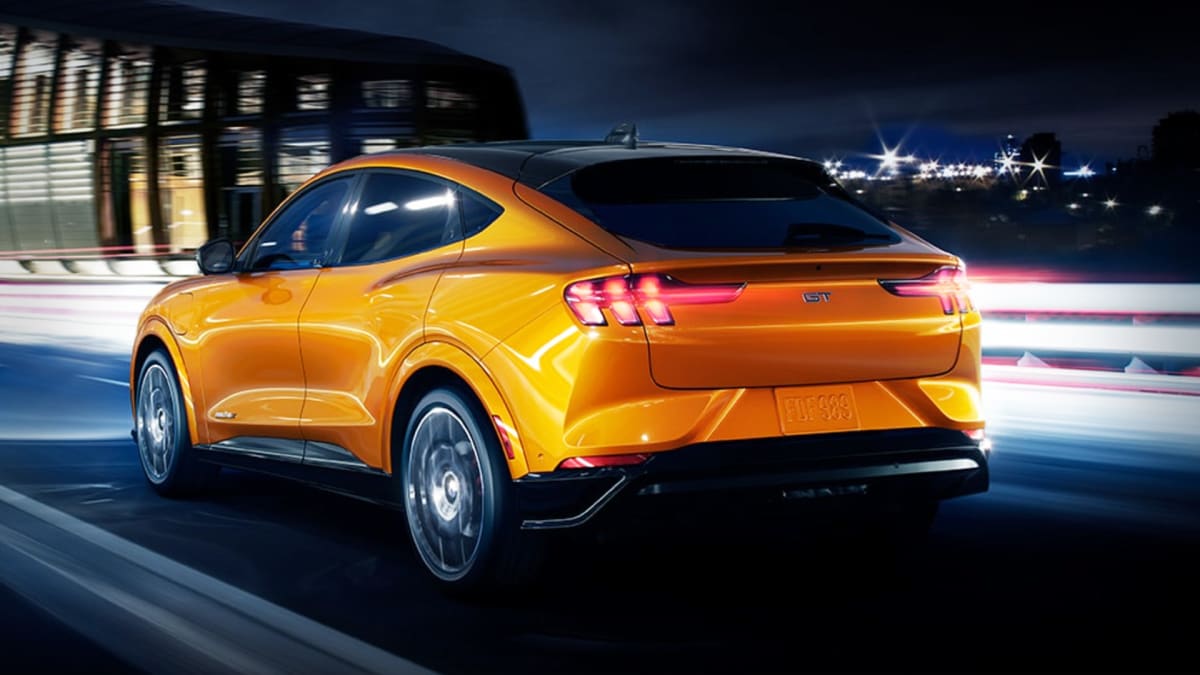
Ford wants to reassure investors and analysts. And it wants to remove all doubt.
At the very least Ford wants to prove it can position itself as No. 2 to Tesla in the electric-vehicle market. In the best-case scenario, it wants to show it can stand toe-to-toe with the Austin group and its CEO, Elon Musk.
The Blue Oval has organized Monday, May 22, as a capital-markets day, called “Delivering Ford+.” The purpose: to update investors and analysts on its growth plans.
Don't Miss: Elon Musk Makes Bold AI Prediction That'll Delight Investors
Ford (F) in 2021 unveiled a strategic plan called Ford+, and updated it last year.
This road map separated the Dearborn, Mich., company's activities into three units: Ford Model e, focused on developing electric vehicles and related software; Ford Blue, which brought together the activities of gasoline (internal combustion) engine vehicles; and Ford Pro, dedicated to fleet customers.
Ford CEO Farley Will Seek to Dispel Doubts
CEO Jim Farley has never hidden that the company's key priority is Ford Model e, which is tasked to compete with Tesla (TSLA), the world leader in electric vehicles and by far the world's top auto group by market value -- around $600 billion at last check.
At the time the company said that it would spend $50 billion on electric vehicles between 2022 and 2026. It previously planned to spend $30 billion in the five years ending in 2025.
It also made clear that it was targeting an 8% profit margin based on earnings before interest and taxes for Ford Model e, and a 2-million-unit EV annual production target by 2026, up from an expected 600,000 by the end of 2023. By setting the margin target, Ford enables investors to assess the true costs of the activity.
The problem is that Ford delivered only 12,000 electric vehicles in the first quarter and recorded a negative EBIT margin of 102.1%.
A caveat: The performance stemmed from scheduled downtime at the Cuautitlan assembly plant in Mexico, which produces the Ford Mustang Mach-E SUV. But still, production costs -- engineering and other costs, commodities and other requirements that are subject to inflation -- remain high. The carmaker lost $58,333 for each clean car sold during this period.
Another open question is how Ford, which currently markets three models -- Mach-E, F-150 Lightning and Transit E -- will produce nearly 590,000 electric vehicles over the final three months of the year to meet its announced goal of 600,000 units in 2023.
On the Tesla side, the company produced almost 441,000 vehicles in the first quarter and remains on track to produce 2 million units this year.
Ford: Deals to Ensure Raw Materials for Batteries
Ford on May 22 wants to respond to skepticism by announcing a series of deals with various suppliers of raw materials it needs to develop EV batteries.
Albemarle (ALB) announced a strategic partnership to supply Ford with more than 100,000 metric tons of lithium hydroxide, enough for roughly 3 million electric vehicle batteries, between 2026 and 2030.
Compass Minerals International (CMP) said it has signed a multiyear deal under which it would supply Ford with up to 40% of the battery-grade lithium carbonate originating from a new project in Ogden, Utah.
Closely held EnergySource Minerals of San Diego said it agreed to provide Ford with lithium hydroxide from a new site in Imperial Valley, Calif. The project is expected to produce about 20,000 metric tons of lithium annually.
Finally, Canadian miner Nemaska Lithium has agreed to supply Ford with up to 13,000 tons of lithium hydroxide per year over 11 years. The lithium will be sourced from projects in Nord-du-Québec and Bécancour, both in Québec.
Don't Miss: GM Sends Strong Message to Tesla and Ford
The common point of these agreements is that the raw materials will come either from the U.S. or from countries with which Washington has free-trade agreements. This is important because it will enable buyers of Ford vehicles to benefit from the federal tax credit of $7,500 granted to clean vehicles meeting certain conditions.
In addition, Ford hopes that these agreements will enable it to reduce manufacturing costs.
On the Product Side: New 3-Row Electric SUV
The carmaker also tried to send a reassuring message on the product side. The automaker said it's developing a three-row full electric SUV.
Doug Field, Ford's chief advanced product development and technology officer, teased an "affordable" family vehicle. This vehicle, he said, will be a "personal bullet train." Set for launch in 2025, the SUV should be able to travel 350 miles on a single charge.
The new SUV comes in addition to an electric pickup truck that Ford is already developing.
"Our next electric truck: Project T3," Farley tweeted on March 24 with three lightning bolts.
"T3" stands for 'Trust The Truck,' says Ford.
The code name is for Ford's second-generation electric truck, which is to be developed alongside a new assembly plant outside Memphis.
This new $5.6 billion factory, called BlueOval City complex, will have capacity to produce 500,000 electric vehicles per year at full production.
"The days of being all things to all people are over at Ford,” Farley said ahead of the event.
"We’re developing and delivering connected, digital products that give customers tailored ownership experiences -- opening up diverse revenue pools and unprecedented growth for us instead of jockeying for slivers of share with complex hardware in overserved vehicle categories.”
The question raised is: Will investors remain patient?







